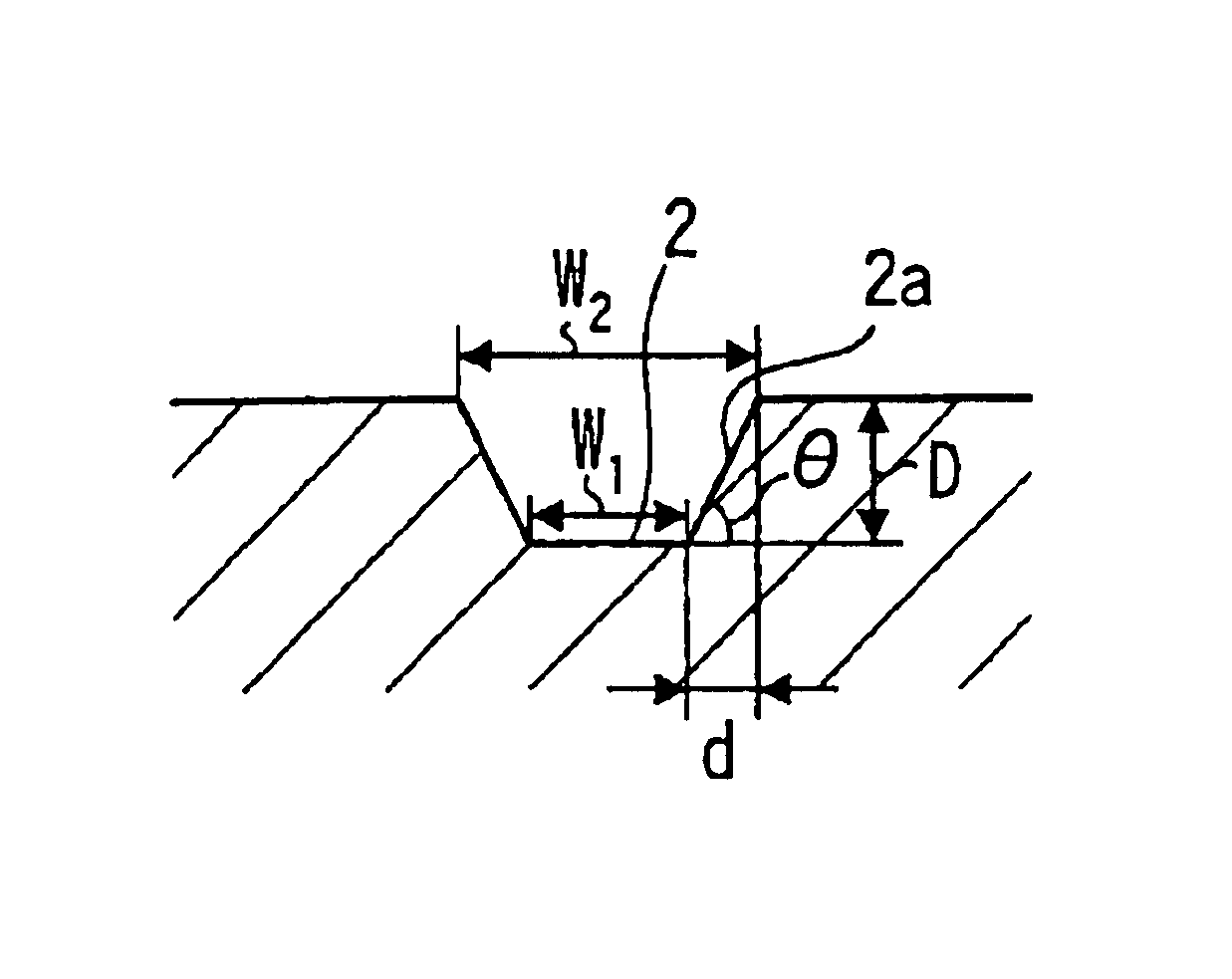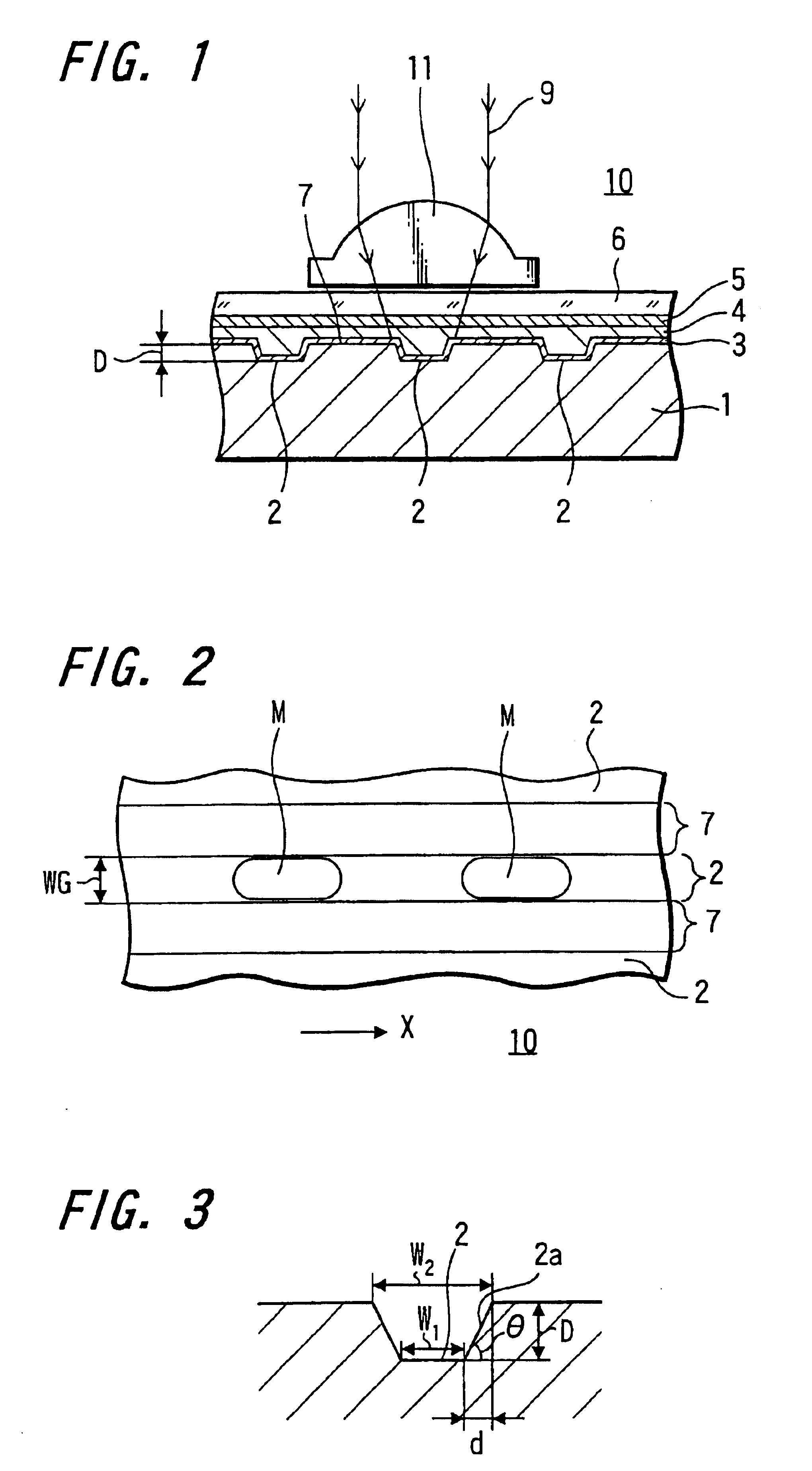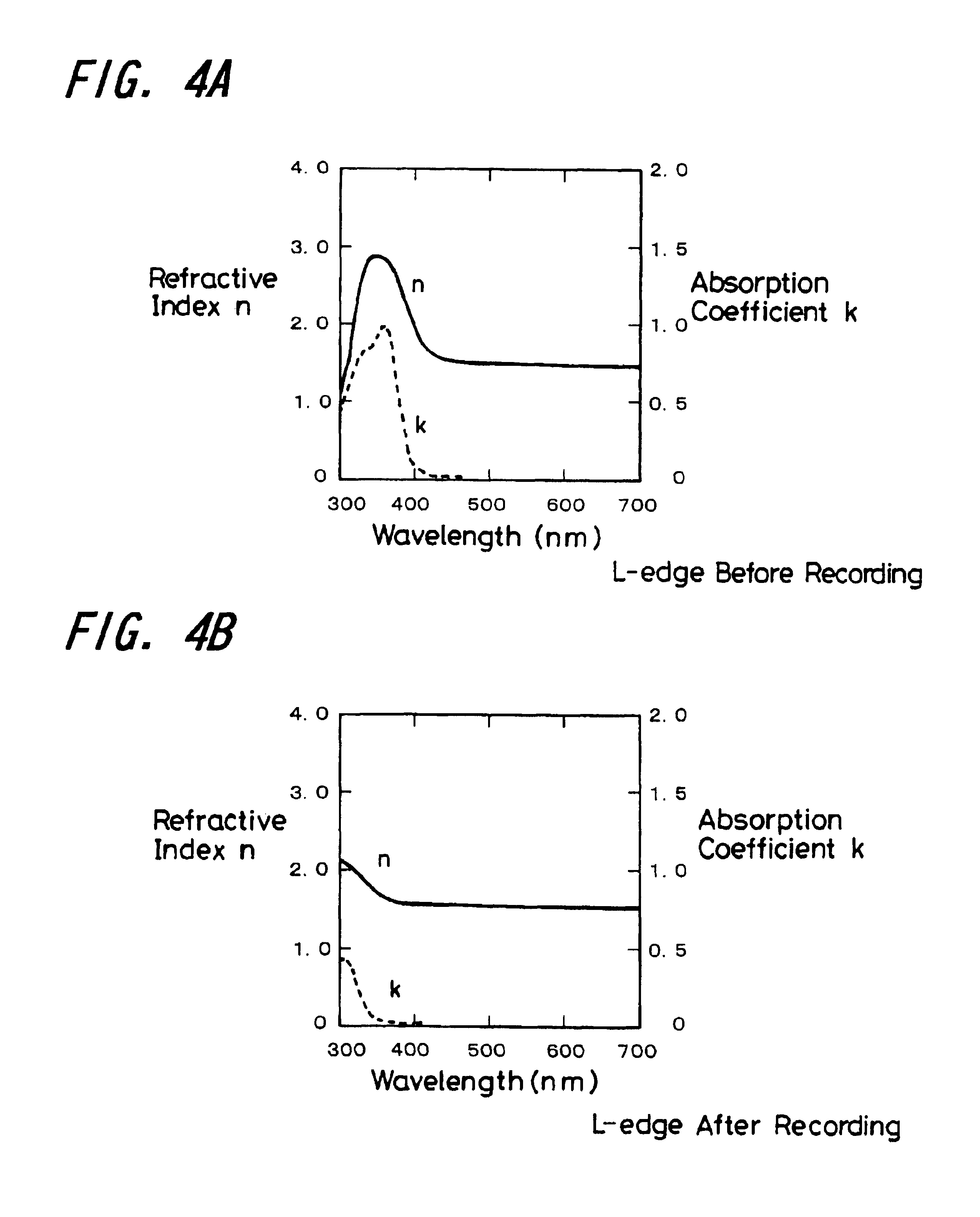Optical recording medium
a technology of optical recording and optical tape, applied in optical recording/reproducing/erasing methods, instruments, photomechanical equipment, etc., can solve the problems of reducing affecting the quality of optical tape, and unable to obtain excellent reproduction characteristics by such measures as modifying the depth of recessed portions, so as to achieve excellent reproduction characteristics and high reproduction outpu
- Summary
- Abstract
- Description
- Claims
- Application Information
AI Technical Summary
Benefits of technology
Problems solved by technology
Method used
Image
Examples
first embodiment
[First Embodiment]
In this embodiment, the recessed portions 2 are grooves provided as tracking guide grooves having the dimensions of 100 nm in depth, 0.12 μm in width, 0.6 μm in space between the grooves, and tan θ=2 in slope of the side walls of the grooves as illustrated in FIG. 3.
Also, in this embodiment, a phase modulation type optical disc is manufactured using a polycarbonate (PC) substrate 1 in which the recessed portions 2, i.e., the grooves are formed in one main surface of the substrate 1, the metal film 3 is formed by sputtering Ag of 20 nm in thickness on the surface where the grooves are formed, and the recording film 4 of an organic pigment film, the dielectric film 5 made from SiN of 10 nm in thickness and the light transmissive protection film 6 are sequentially formed on the metal film 3.
The organic pigment film is formed by spin coating. In this case, thickness of the film is set to 170 nm inside the grooves and 70 nm on the land portions.
Further, in this embodime...
second embodiment
[Second Embodiment]
FIG. 8 shows measurement results of respective reproduction signal amplitude, i.e., the returned light amounts obtained by changing the width of the groove in the optical recording medium according to the first embodiment. As shown in FIG. 8, the signal amplitude declines when the width of grooves exceeds a certain value. The reason for that is when width of the grooves thus increases as compared to that of the marks, the proportion of width of the marks within a spot of the reproduction light increases as the reproduction light spot comes to the center of the mark and the reflectance increases as a result of decreased interference with the land portions.
Specifically, FIG. 9 shows a reproduction signal level in the direction of grooves length when width of the grooves is increased to 0.28 μm. According to FIG. 9, the reflectance increases near the center of the marks.
According to FIG. 8, it is understood that the optimum result is obtained when width of the groove...
third embodiment
[Third Embodiment]
In the third embodiment, similarly to the first embodiment a phase modulation type optical disc is manufactured by employing the substrate 1 using polycarbonate (PC) in which grooves are formed as the recessed portions 2 and side walls are substantially vertical, forming the metal film 3 by sputtering Ag of 20 nm in thickness on the surface where the grooves are formed, and sequentially depositing thereon an recording film 4 formed of organic pigment film, the dielectric film 5 formed of SiN of 10 nm in thickness and the light transmissive protection film6.
With respect to width of the grooves of the recessed portions 2 in the substrate, in order to obtain the above mentioned advantageous effect, width of the recessed portions 2, i.e., width of the grooves was set to 0.14 μm in this embodiment. Further, width of the lands was set to be equal to the width of the grooves. The object lens was N.A.=0.85.
Further, in this embodiment, there were manufactured optical discs ...
PUM
| Property | Measurement | Unit |
|---|---|---|
| wavelength | aaaaa | aaaaa |
| refractive index | aaaaa | aaaaa |
| refractive index | aaaaa | aaaaa |
Abstract
Description
Claims
Application Information
 Login to View More
Login to View More - R&D
- Intellectual Property
- Life Sciences
- Materials
- Tech Scout
- Unparalleled Data Quality
- Higher Quality Content
- 60% Fewer Hallucinations
Browse by: Latest US Patents, China's latest patents, Technical Efficacy Thesaurus, Application Domain, Technology Topic, Popular Technical Reports.
© 2025 PatSnap. All rights reserved.Legal|Privacy policy|Modern Slavery Act Transparency Statement|Sitemap|About US| Contact US: help@patsnap.com



